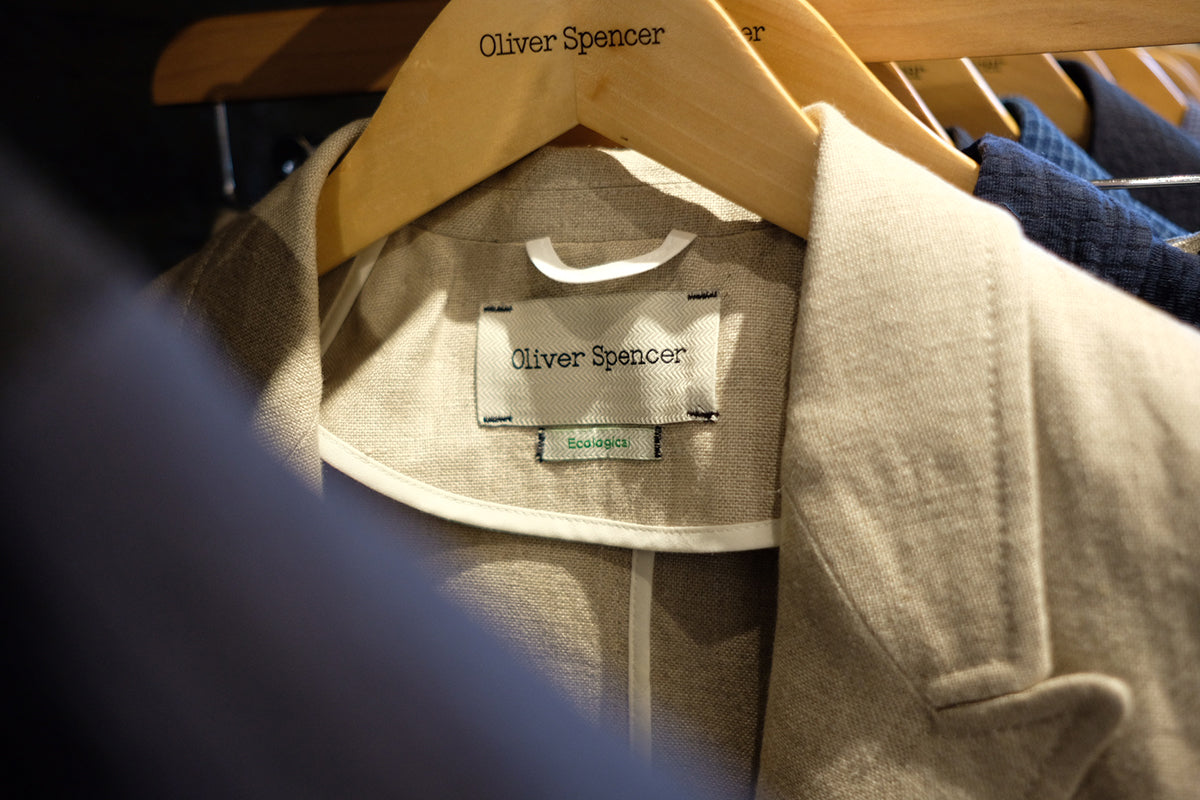With everyone housebound in self-isolation, there has never been a better time to reassess your wardrobe and reduce its carbon footprint. It's time to separate the wheat from the chaff and make better fashion choices. Here are five simple ways you can go about it.
1. Buy organic cotton
It isn’t always made clear why making the switch to organic cotton can have such a profound impact, but it really can. Conventionally grown cotton can be one of the most environmentally damaging and socially harmful parts of the fashion industry due to its excessive use of insecticides and water. Cotton accounts for 2.5% of world agriculture, but it uses a disproportionate 16% of world insecticides. Largely speaking, the insecticides used in cotton growing are toxic for humans and the natural environment. By using organically grown cotton you eliminate their use, thereby increasing welfare for the growers and handlers of raw-state cotton. The carbon footprint is also reduced through increased soil fertility and elimination of greenhouse gases caused by the application of non-organic insecticides, pesticides, and fertilisers. Furthermore, less water is needed, not only through irrigation but also through eradicating water involved in creating non-organic inputs such as synthetic insecticides and fertilisers. Water use is subject to growing regions, but rain-fed crops are more commonplace with organic cotton because healthy soil is better at retaining water and once the water has been used it will not contaminate sources and can be used again in a productive and safe way. This is why we are increasing the percentage of organic cotton used in our collections year-on-year. It is not an easy transition and will take us time to develop fabrics with our current suppliers as well as finding new suppliers to meet our needs. However, we are committed and hope to be fully organic in the not too distant future.

2. Learn to love linen
The life-cycle of linen is a one-of-a-kind process that thrives on working with nature. As a seed, linen is gently pressed into soil using a large roller that places it approximately 2cm below the ground where sufficient amounts of moisture can be absorbed, allowing the seed to successfully germinate. The best time to plant the seeds varies year to year as the success of the crop is dependent on temperatures not dropping below 3 degrees Celsius and no early exposure to heavy rain. Farmers must be aware and in-tune with weather patterns to have a good crop. Environmentally progressive growers will only sew flax on the same plot every 7 years as this allows for crop rotations to keep a balance of nutrients and maintain healthy soil. After 100 days you have a fully grown plant at around 1 metre tall. When it flowers, it does so for only a single day. After this, the field swiftly moves back to its former green glory. Following the flowering period, each plant develops seed pods that are used for food, linseed oil and for sewing next year’s crop.
From a style point of view, it's a fantastic summer cloth, especially in shirting and tailoring. Yes, it creases easily, but that's its joy. That crumple offers a louche, casual vibe to tailoring, removing any notions of stuffiness or formality from a suit. Moreover, it's extremely lightweight and dries quickly, making it ideal for holiday wardrobes.

3. Timeless style
Fashion has an obsession with trends, primarily because us humans like fawn over new things so the more trends there are, the more reasons we have to shop. We're also herd creatures that often prefer to follow the direction dictated to us, thus trends become something alluring and simple for us to hang on to. At Oliver Spencer, we've never espoused trends or been dictated to by them. Instead we put our own spin on timeless, classic menswear pieces that will never go 'out of fashion'. If your wardrobe is a combination of tailoring, workwear and loungewear classics, we can guarantee that they will still be relevant in 5, 10, 20 years time. Sure, certain styles may go in and out of general favour, but mostly you'll have a streamlined wardrobe that stands the test of time. Moreover, it's important that you discover your own individual style and be confident with it. Of course, it can evolve over the course of a lifetime, but if it is formed by the rudimentary menswear silhouettes, you'll get a lot more out of it than you will from any overpriced, cheaply made, hype-driven products.
4. Repair, reuse, recycle
No matter how well a garment is made, there will always be a point where it must enter the trusty hands of repair or alteration to take on a new lease of life. Alteration and repair is a service we have provided from our beginnings and is something that will always be entwined with our approach to clothing. We want you to feel comfortable in our clothing and for it to be useful for as long as possible. We can pretty much make any alteration or repair you desire, but for more complex or unique cases please contact a store manager or our customer services team for more information.

5. Buy quality
Quality garment construction and the use of quality fabrics have always been core values of ours, as we want to create menswear that can be enjoyed and valued for years. Aptly, a garment’s environmental footprint is strongly determined by its quality and usage. Purchasing one quality garment which can last for years has a significantly smaller environmental impact than purchasing multiple poor-quality garments over the same period of time. One of the greatest luxuries of having physical stores is when we see garments that have been worn for years or a garment that has been passed down through generations.
Click here to shop this season's finest ecological and sustainable pieces.


